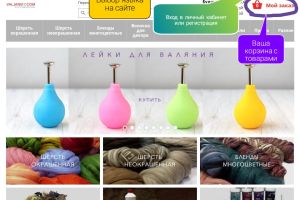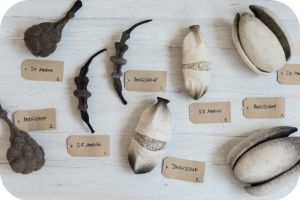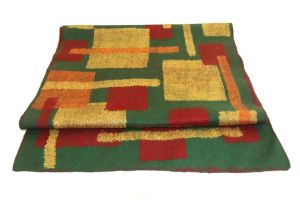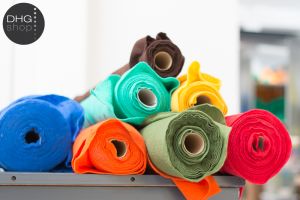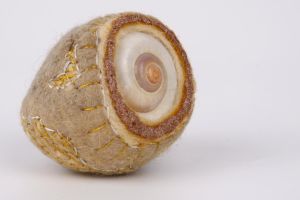In the 19th century, the production of felt cloths with the help of special needle-punched machines arose. The production of technical non-woven materials developed, in addition to wool, the use of artificial and synthetic fibers began. The needles also changed, but for almost 100 years they were used only in production. In the 1980s, there was a case that became the basis of dry felting in needlework: David Stanwood, the husband of the manufacturer of woolen blankets, manually threw a ball from the wool with a needle and presented his wife with the idea of felting earrings and bracelets. Their friend Ayala Tolpai, and then the Danish Birgit Krag Hansen, became popularizers of the new method. So a new type of needlework arose - felting with needles. Now there are two needle numbering systems - Russian and foreign. Since Gros - Becker (Germany) foreign-made needles are the best in quality and we will introduce you to their products.
Felting needles are the most important tool for felting, so you need to choose high-quality needles proven by time manufacturers. We suggest you use felting needles in the world's largest manufacturer of quality needles - the German concern GROZ BECKERT®
GROZ BECKERT® was established in 1852. the merger of the two companies for the production of needles for sewing, knitting and felting "Theodor Groz & Söhne" and "Ernst Beckert". Since then, the company's engineers have created many discoveries in the development of felting needles, which allowed to create the highest quality needles. The concern has a lot of patents and its own developments, which allows it to be the best and always relevant in world markets.
Groz-Beckert is the world's leading supplier of needles for industrial machines, precision parts and precision tools, as well as systems and services for the production and joining of textile fabrics. All over the world, products and services support the textile processes of knitting and knitting, weaving, felting, tufting, carding and sewing.
The company, founded in 1852, employs more than 9,000 people.
The needles have a variety of configurations and differ in the length of the needle (from 6 to 13 cm), the length of the working part (from 15 to 30 mm), the thickness (from No. 32 to 42), according to the cross-section of the working part, the shapes of serifs differ, their number varies faces and the distance between serifs.
The most common needles in modern dry felting are simple triangular needle and star-shaped cross-section. But they are used mainly by beginners, more experienced craftsmen use a full range of felting needles: twisted (twisted), conical (especially durable), reverse (give fluffy to the product), crown.

________________________________________________________________________________________________________________________________________________

________________________________________________________________________________________________________________________________________________

________________________________________________________________________________________________________________________________________________

________________________________________________________________________________________________________________________________________________

________________________________________________________________________________________________________________________________________________

________________________________________________________________________________________________________________________________________________

________________________________________________________________________________________________________________________________________________
Notch Configurations
Groz-Beckert offers four different tooth styles. The size and shape of the teeth are very important for the effectiveness of the needle-piercing process, as they are used for transporting and gluing fibers inside the non-woven material. Due to the formation of fiber loops, the nonwoven fabric is becoming more and more compressed. This leads to higher friction forces from fiber to fiber, which determine the final strength and volume, as well as all other mechanical properties of the nonwoven material.

________________________________________________________________________________________________________________________________________________
When choosing felting needles, we advise you to read, in the product card, our description of the classification for each needle.
___________________________________________________________________________
Here are the main tips for beginners: 1. The needle should correspond to the stage of dodging the wool (beginning, middle, finish, polishing), if the product is already pre-felted, and you continue to work with the starting needle number 36, then it penetrates the product more difficult and may break when experiencing resistance or bend over. 2. Each needle must penetrate the product strictly vertically (like a needle in a sewing machine). 3. If you feel resistance and the needle does not fit well into the product, then you need to change the needle to a thinner one (for example, you worked with number 36, go to number 38, then number 40). 3. It is impossible to work with the product while keeping it hanging. The product should be placed on a foam mat or on a special brush. 4. The speed of dodging the product depends on several factors: the type of wool, the speed of the needle, the correct selection and alternation of needles. 5. The priority is the technique of the master, and not the strength in the hands.




